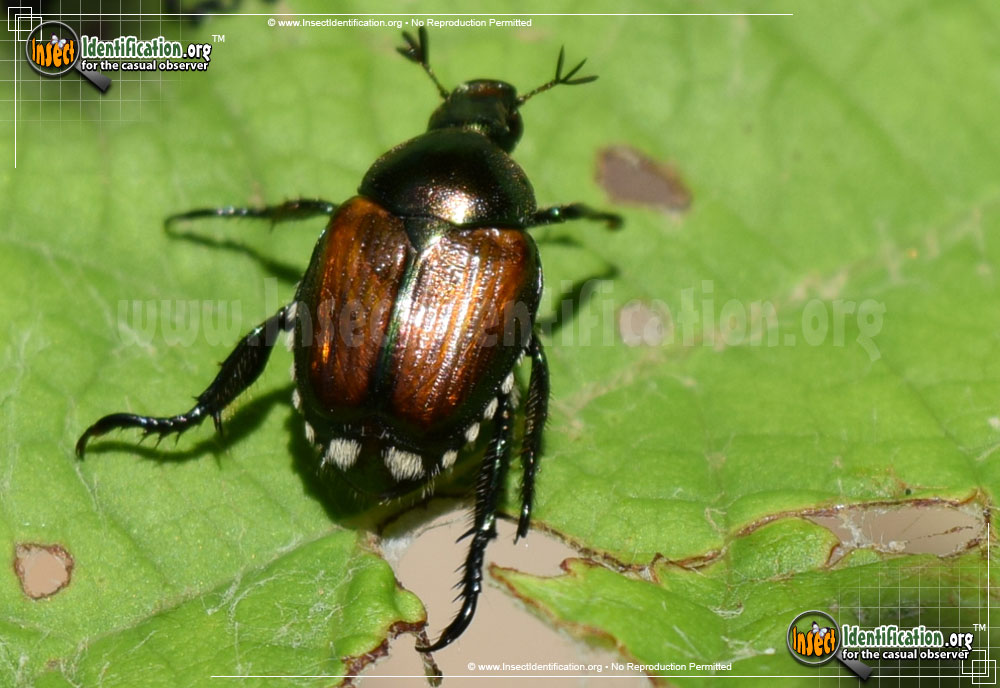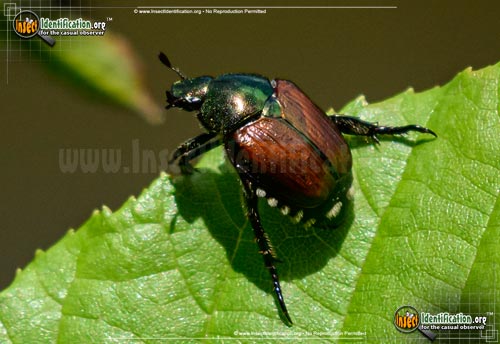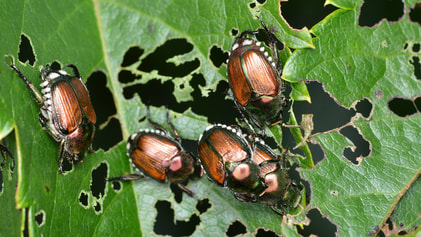japanese beetle life cycle iowa
As this insect moves into other areas its important to understand their life cycle the damage they cause and options for managing them. Japanese beetles are often found in field edges or areas of delayed growth.
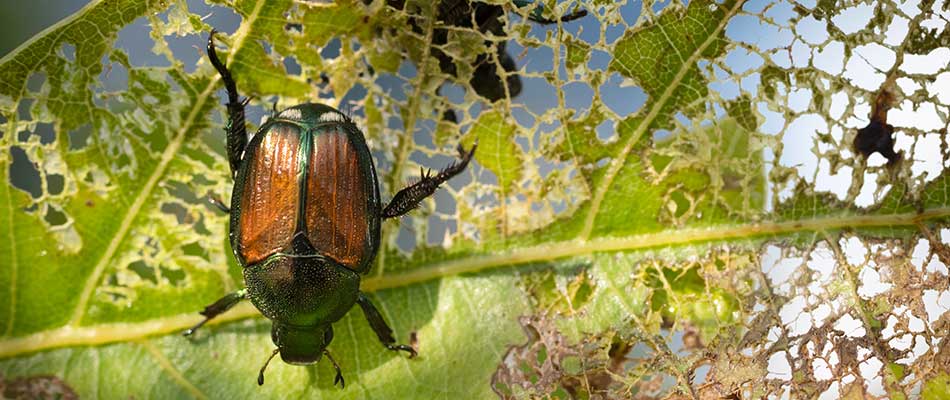
Japanese Beetle Control In Des Moines West Des Moines Ankeny Ia A Lawn Landscape
An individual Japanese beetle lifespan is about 30 to 45 days.

. The grub is a creamy white with a yellowish-brown head. Japanese beetle life cycle. This is when they are easiest to control.
Most damage is from adult feeding. As soil temperatures warm in the spring the larvae move closer to the soils urface. After the egg hatches in summer the grub feeds on roots until the following summer when it emerges as a shiny beetle.
The most susceptible life stage of the Japanese beetle is the newly hatched grub in the soil. Thats because much of its life cycle takes place underground. A set of dark strong mandibles is present on the top of its head.
Adult female beetles lay eggs in the soil in early June. These eggs hatch late July into August and are small and close to the soil surface. Japanese beetle have one generation per year Figure 2.
The egg larva and pupa life cycle stages develop underground and unless soil is removed or dug into these life stages will not be seen. This cycle is repeated until the female lays 40 to 60 eggs. Japanese beetles have a univoltine life cycleone generation per year.
In most parts of its range the Japanese beetle completes its life-cycle in one year but some populations in cooler climates may complete their development in two years Vittum 1986. Late-planted fields are at greater risk. Its body consists of 13 segments 10 on the abdomen and 3 on their thorax.
When resting the larva is C-shaped. During the feeding period females intermittently leave plants burrow about 3 inches into the ground and lay a few eggs. Here are the stages in the lifecycle of a Japanese beetle.
Observing Japanese beetles feeding on plants is quite common since the adult beetle feeds on about 300 species of trees shrubs ornamental and fruit trees in addition to vegetable crops. They overwinter deep in the soil and resurface again in spring when soil temperatures rise to feed for another 3 to 4 weeks before emerging as adult Japanese beetles. By midsummer the eggs hatch and the young grubs begin to feed.
They over winter as third in star larvae in the soil below the frost line. Adult beetles are metallic green with brown wings approximately 57 mm wide and 811 mm long Figure 1. Its not easy to spot the Japanese beetle at first.
Japanese beetle are distinguished from native beetles by the presence of five pairs of white tufts on their abdominal sides and two additional tufts on the abdomen tip. Appearance of adult the timing of oviposition and subsequent development have been shown to vary with latitude altitude and also from year to year Fleming 1972. The adults mate and females lay their eggs in the soil in grassy areas.
However the larval grub also can feed on roots. You can use an organic product called Milky Spore. Life Cycle Japanese beetles have one generation per year in Iowa Fig.
It appears translucent and its body has brown setae and short spines all over.
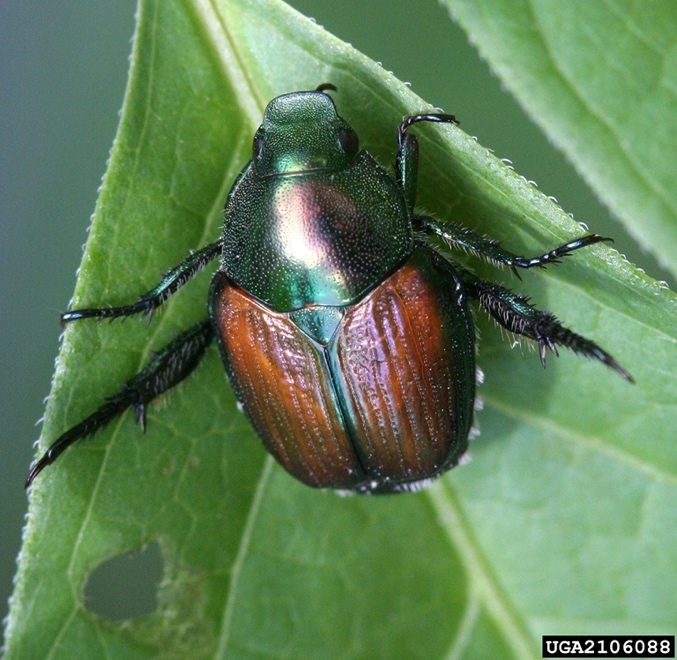
Japanese Beetle As A Pest Of Field Corn Land Grant Press
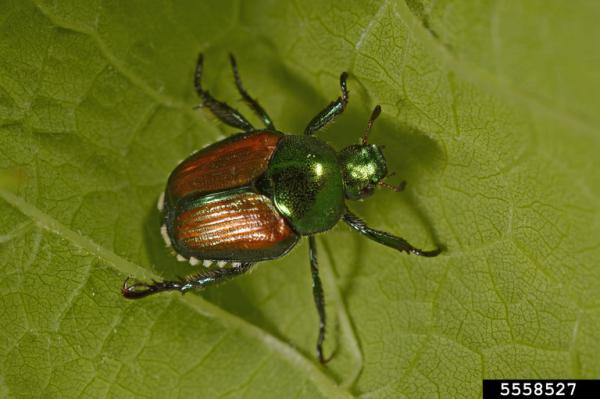
Japanese Beetle National Invasive Species Information Center

Japanese Beetle Popillia Japonica

Japanese Beetles Expanding Range In Iowa Integrated Crop Management
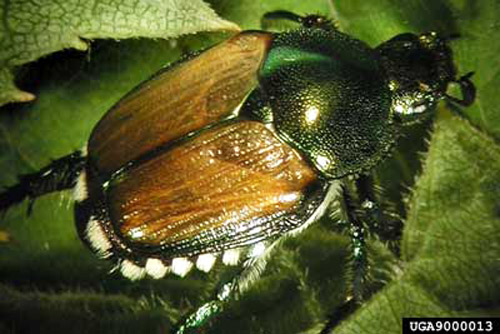
Japanese Beetle Popillia Japonica
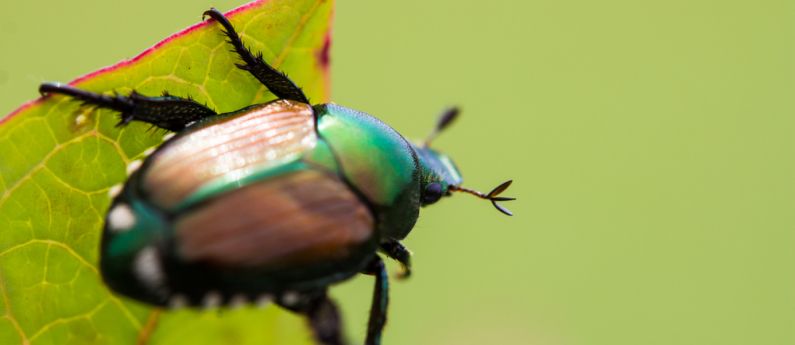
The Myths And Facts About Trapping Japanese Beetles Rescue

How Many Japanese Beetles Will You See This Year Horticulture And Home Pest News

Japanese Beetle Control The Good Earth Garden Center
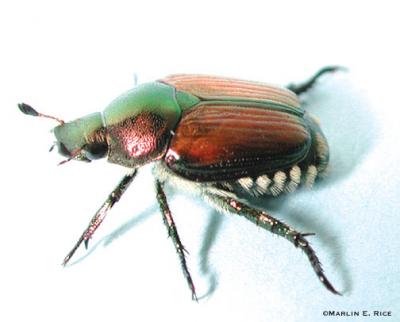
Japanese Beetle In Corn And Soybean Integrated Crop Management

Japanese Beetles Meadows Farms
Extension Outreach Crop Sciences Department College Of Aces University Of Illinois
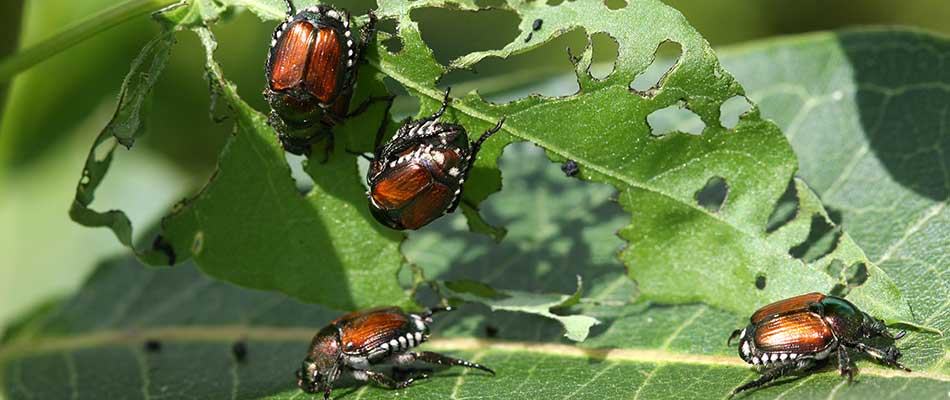
Japanese Beetle Control In Des Moines West Des Moines Ankeny Ia A Lawn Landscape
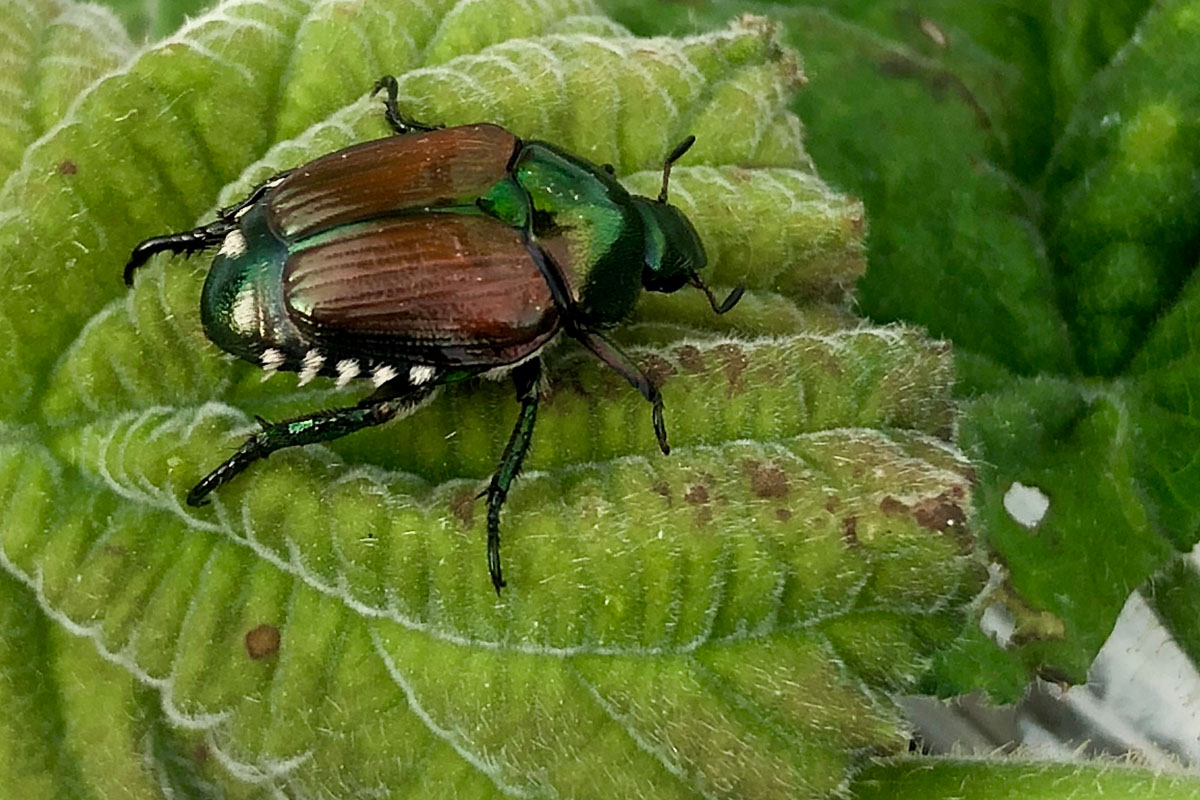
Japanese Beetle Control The Good Earth Garden Center

Signs Of Japanese Beetle Infestations Shades Of Green Lawn Landscape
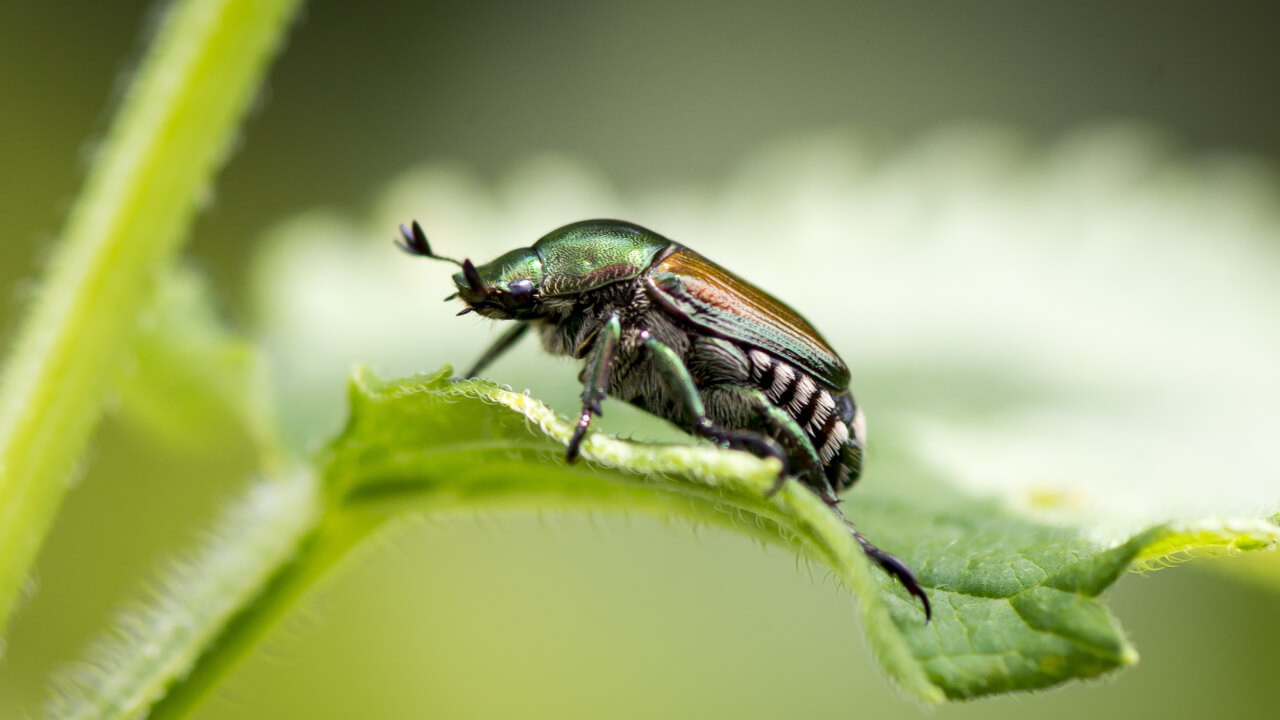
Japanese Beetle Soybean Pest Soybean Research Information Network Srin

The Japanese Beetle Has Reached Its Peak Population In Places Across Iowa While Some Areas Of The State Have Not Seen The Bee Japanese Beetles Beetle Japanese
